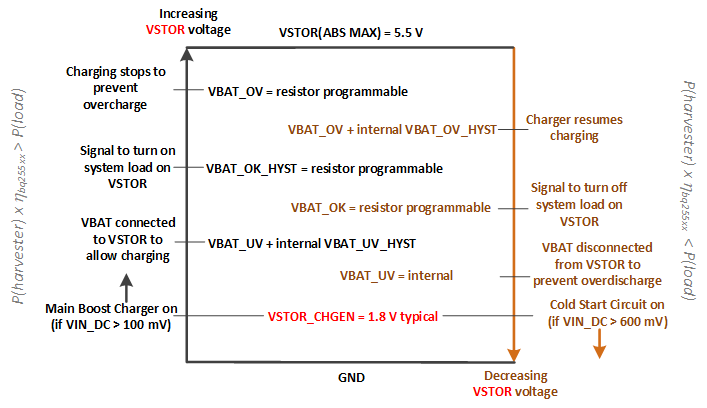SLUSBJ3F August 2013 – March 2019
PRODUCTION DATA.
- 1 Features
- 2 Applications
- 3 Description
- 4 Revision History
- 5 Pin Configuration and Functions
- 6 Specifications
- 7 Detailed Description
- 8 Application and Implementation
- 9 Power Supply Recommendations
- 10Layout
- 11Device and Documentation Support
- 12Mechanical, Packaging, and Orderable Information
Package Options
Mechanical Data (Package|Pins)
- RGR|20
Thermal pad, mechanical data (Package|Pins)
- RGR|20
Orderable Information
7.3.4 Battery Voltage in Operating Range (VBAT_OK Output)
The IC allows the user to set a programmable voltage in between the VBAT_UV and VBAT_OV settings to indicate whether the VSTOR voltage (and therefore the VBAT_SEC voltage when the PFET between the two pins is turned on) is at an acceptable level. When the battery voltage is decreasing the threshold is set by Equation 3:

When the battery voltage is increasing, the threshold is set by Equation 4:

The sum of the resistors is recommended to be no higher than 13 MΩ, that is, ROK1 + ROK2 + ROK3= 13 MΩ. SLUC484 provides help on sizing and selecting the resistors.
The logic high level of this signal is equal to the VSTOR voltage and the logic low level is ground. The logic high level has ~20 KΩ internally in series to limit the available current to prevent MCU damage until it is fully powered. The VBAT_OK_PROG threshold must be greater than or equal to the UV threshold. Figure 21 shows VBAT_OK operation. Figure 12 shows the relative position of the various threshold voltages.
